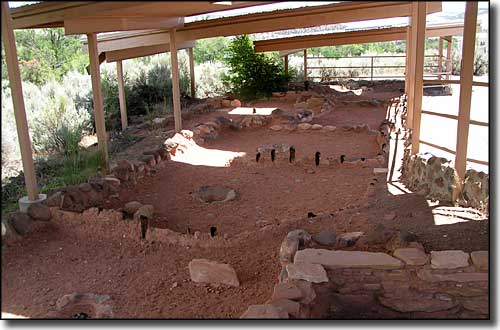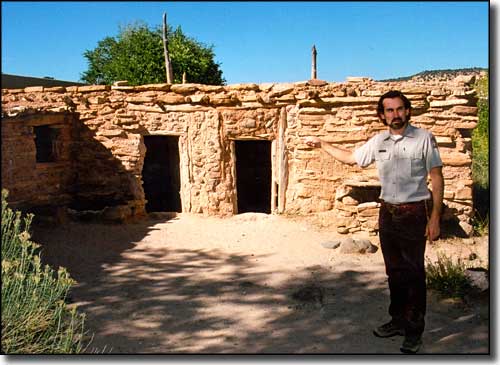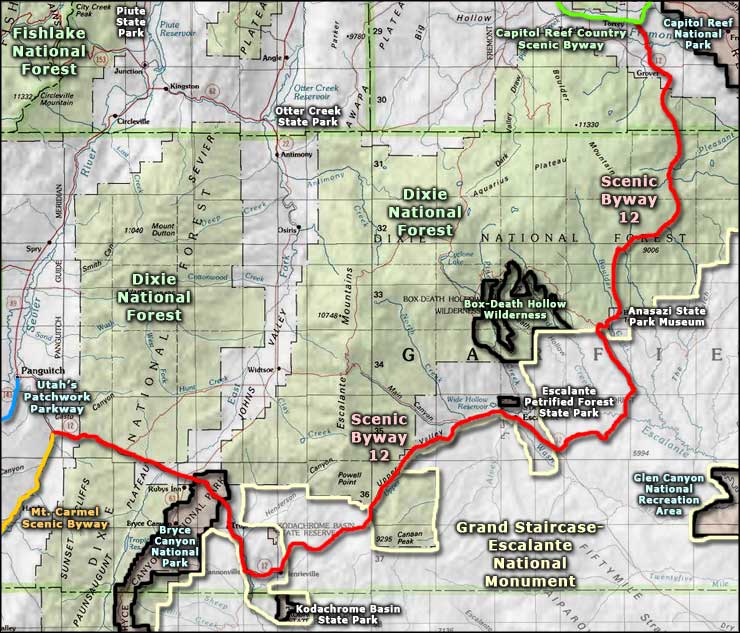
Anasazi State Park Museum

The Coombs Site at Anasazi State Park Museum
Located about 22 miles northeast of Escalante on Highway 12, the 6-acre Anasazi State Park Museum preserves and protects one of the largest Ancestral Puebloan ruins west of the Colorado River. Archaeological research here has discovered more than 100 structures that were occupied from about 1160 CE to about 1235 CE by a population of around 200 people. The actual "dig" is known as the Coombs Site and is located directly behind the museum itself. The museum displays hundreds of the thousands of artifacts that have been found here.
The Coombs Site is unique in that it existed along the border between the Ancestral Puebloans and the Fremont culture. The Ancestral Puebloans lived mostly to the east and south while the Fremonts lived mostly west and north. The artifacts and architecture found at the Coombs Site show evidence of the type of cultural blending that would be typical of a prehistoric "melting pot." Some of the artifacts found here came from distant places in the Ancestral Puebloan world, suggesting that the Coombs Site was an integral part of an extensive trade network. The village at Coombs is mostly unexcavated, the only "real" excavation having happened in 1958-59 as part of the Glen Canyon Dam Project. At that time, archaeologists found about 90 rooms in 2 separate "apartment" complexes, with storage pits, open shelters and a number of adobe pit houses in the surrounding area. They also found structural building supports that were singed, suggesting the settlement was abandoned after a village-wide fire.
This place was named "Anasazi State Park Museum" at a time when that Navajo word ("Anasazi," meaning "ancient enemy ancestors") was most in vogue when referring to the descendants of the Archaic Desert culture known as Basketmakers who cultivated annual crops (corn, beans, squash, cotton), domesticated the turkey, and built and occupied stone dwellings and villages on the Colorado Plateau from 1 CE to about 1300 CE. Their descendants can now be found among the Hopi, Zuni, Acoma and Rio Grande Pueblos. While the preferred Hopi word for ancestors is "Hisat'sinom," Ancestral Puebloan is the term most often used to describe these ancient peoples and their culture these days. The Ancestral Puebloans are most known for the multi-storied cliff dwellings and pueblos, pit houses, stone towers, and other incredible structures that remain as testaments to their extraordinary architectural abilities. They were also highly skilled potters, leaving behind many beautiful, intricately decorated bowls, ladles, mugs, pots and other ceramic objects that have survived the ravages of time for 700 years and more. As archaeologists continue assembling the bits and pieces of what we've found of the Ancestral Puebloan puzzle, a picture of advanced and complex religious, civic and social structures with trade routes extending thousands of miles in all directions is slowly emerging. Essentially, this ancient culture was living in multi-storied "apartment buildings" with running water and septic disposal systems at a time when most Europeans were still living in thatched huts and using their drinking water sources for toilets.
Museum Hours: 8 AM to 6 PM in the summer, 9 AM to 5 PM in the winter. Anasazi State Park Museum is open every day except Thanksgiving, Christmas and New Year's Day. Visits cost $5 per person or own an annual Utah State Parks Pass for $75. Families can get in for $10, too. The museum offers an outdoor picnic area, an auditorium and a museum store but any overnight facilities you might need are located nearby and not at the State Park.

Reconstructed pueblo homes at Anasazi State Park Museum

Anasazi State Park Museum area map
